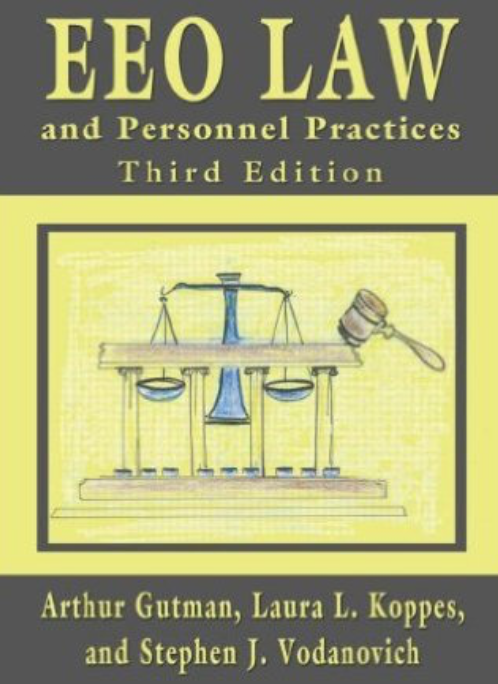HR and Employment Law: Some Issues to Consider for 2017 Onward
-

For Human Resources leaders, staying up to date on changes in federal state, and local employment legislation is mandatory, but it isn’t easy. And with the impending addition of a ninth justice to the Supreme Court, and the 115th Congress recently convened, we can expect that it won’t get easier. Significant changes may take place in the near future. But while those changes can’t be predicted, the following issues are expected to confront the courts in 2017 and beyond.
Anti-Discrimination Laws
The balance between the free exercise of religion and employment anti-discrimination laws has been the subject of numerous court rulings since the Religious Freedom Restoration Act (RFRA) was passed in 1993. RFRA allows individuals and organizations to challenge an action by the federal government (e.g., regulations, requirements) if it conflicts with their sincerely held religious belief(s) and presents a substantial burden to their free exercise of religion.RFRA has resulted in a number of conflicts between religious freedom and Title VII (the federal employment anti-discrimination law that prohibits discrimination against employees on the basis of sex, race, color, national origin, and religion) around the country. Although decisions have been mixed, the courts have indicated a willingness to give considerable deference to religious freedom and practices. The interpretation of the RFRA and religious practice in employment contexts will likely continue to confront the legal system.
RFRA and the Affordable Care Act:
The RFRA was given significant clout by the Supreme Court when Hobby Lobby successfully argued in 2014 that the Affordable Care Act (ACA) requirement to provide contraception to female employees was a violation of their sincerely held religious beliefs. In 2016 a series of plaintiffs claimed that the ACA’s requirement that employers, including religious-affiliated organizations, must file a form or notify Health and Human Services of their religious objections to providing health care for contraception placed a substantial burden on their exercise of religion. The requirement, once fulfilled, means insurers then provide contraceptive coverage at no additional cost. The Supreme Court sent the case back to the lower courts to work out a plan where notice of religious objections would not be required from religious-affiliated organizations but contraceptive coverage for employees would still be provided.Religious Freedom and the Rights of LGBT Individuals:
Many cases have involved a conflict between the rights of LGBT individuals and organizations that consider their orientation as against their sincerely held religious beliefs. It is important to note that while federal law does not specifically cover LGBT rights, many states and organizations have legal protections in place. In addition, the Supreme Court established that “sex stereotyping” (holding different expectations for male and female employees) is a form of sex discrimination. The Equal Employment Opportunity Commission (EEOC) has supported LGBT applicants/employees, partly using the “sex stereotype” defense in a number of recent cases, most of which have been decided in the lower courts (see EEOC for a summary of these cases).Some religious freedom defense cases have involved the denial of service to LGBT consumers, not employees. Defendants in these cases included business owners who refused to make a wedding cake for a same-sex couple, sell flower arrangements, and photograph the wedding ceremony of same-sex couples. Most of these types of cases have been found in favor of the plaintiff, although some are on appeal.
Religious Freedom and Dress Codes:
In 2016, the EEOC lost a case against a funeral home that had separate dress codes for male and female employees. The dress code required males to wear conventional male suits, while females had to wear skirt suits. A transgender employee (male to female) was fired for wearing a skirt suit, and the company stated that allowing the employee to continue would have placed a substantial burden on its ability to manage its business consistent with its sincerely held religious beliefs under the RFRA.The court ruled in favor of the funeral home, in part because the EEOC did not produce an alternative to the dress code issue, such as a sex-neutral dress code. The court also rejected the EEOC's Title VII claim that the termination was due to transgender status or gender identity since these are not covered by Title VII. Another recent case also highlights the tension between religion and HR dress code practices. In 2008, Samantha Elauf applied for a job at Abercrombie & Fitch, but was not hired because she wore a headscarf. Abercrombie & Fitch has a “Look Policy” that prohibits the wearing of caps, and the assistant manager thought the scarf might violate company policy. She contacted the district manager, stating that she believed the scarf was worn for religions purposes, but was told the scarf was in violation of the dress code and not to hire the applicant. The company's defense was that they could not be guilty of discrimination unless they had “actual knowledge” of the need for an accommodation. Such knowledge is a common requirement in other cases of discrimination, such as those involving the Americans With Disabilities Act. In 2015 the Supreme Court ruled in favor of Elauf, noting that a plaintiff needs only to show that the company's unwillingness to accommodate a religious practice was a motivating reason for not being hired. In addition, the Court stated that there is no “knowledge requirement” under Title VII to file a disparate treatment case of discrimination. Quoting from the opinion, “Title VII’s definition of religion clearly indicates that failure-to-accommodate challenges can be brought as disparate-treatment claims. And Title VII gives favored treatment to religious practices, rather than demanding that religious practices be treated no worse than other practices” [emphasis by author].Additional Legal Issues In a 2013 workplace harassment case, the Supreme Court advocated a restrictive definition of “supervisor” that is contrary to the definition offered by the EEOC. The Supreme Court described a supervisor as someone who controls tangible employment actions (e.g., hiring, firing), while the EEOC considers a supervisor someone who is responsible for the assignment of work activities, duties, and schedules. As Justice Ginsburg stated in her dissent, “The ball is once again in Congress’ court to correct the error into which this Court has fallen, and to restore the robust protections against workplace harassment the Court weakens today.”
 Also in 2013 the Court arguably made it more difficult for plaintiffs to win retaliation claims by requiring the showing of “but for” causation, meaning plaintiffs must prove that retaliation was the actual reason for a given employment action (e.g., demotion, termination) rather than simply being a motivating factor. This is a stricter standard of proof than that which is required for discrimination based on race, sex, national origin, color, and religion. As the dissent noted, the decision in the case “should prompt yet another Civil Rights Restoration Act.”
Also in 2013 the Court arguably made it more difficult for plaintiffs to win retaliation claims by requiring the showing of “but for” causation, meaning plaintiffs must prove that retaliation was the actual reason for a given employment action (e.g., demotion, termination) rather than simply being a motivating factor. This is a stricter standard of proof than that which is required for discrimination based on race, sex, national origin, color, and religion. As the dissent noted, the decision in the case “should prompt yet another Civil Rights Restoration Act.”
Learn more here: EEO Law and Personnel Practices

